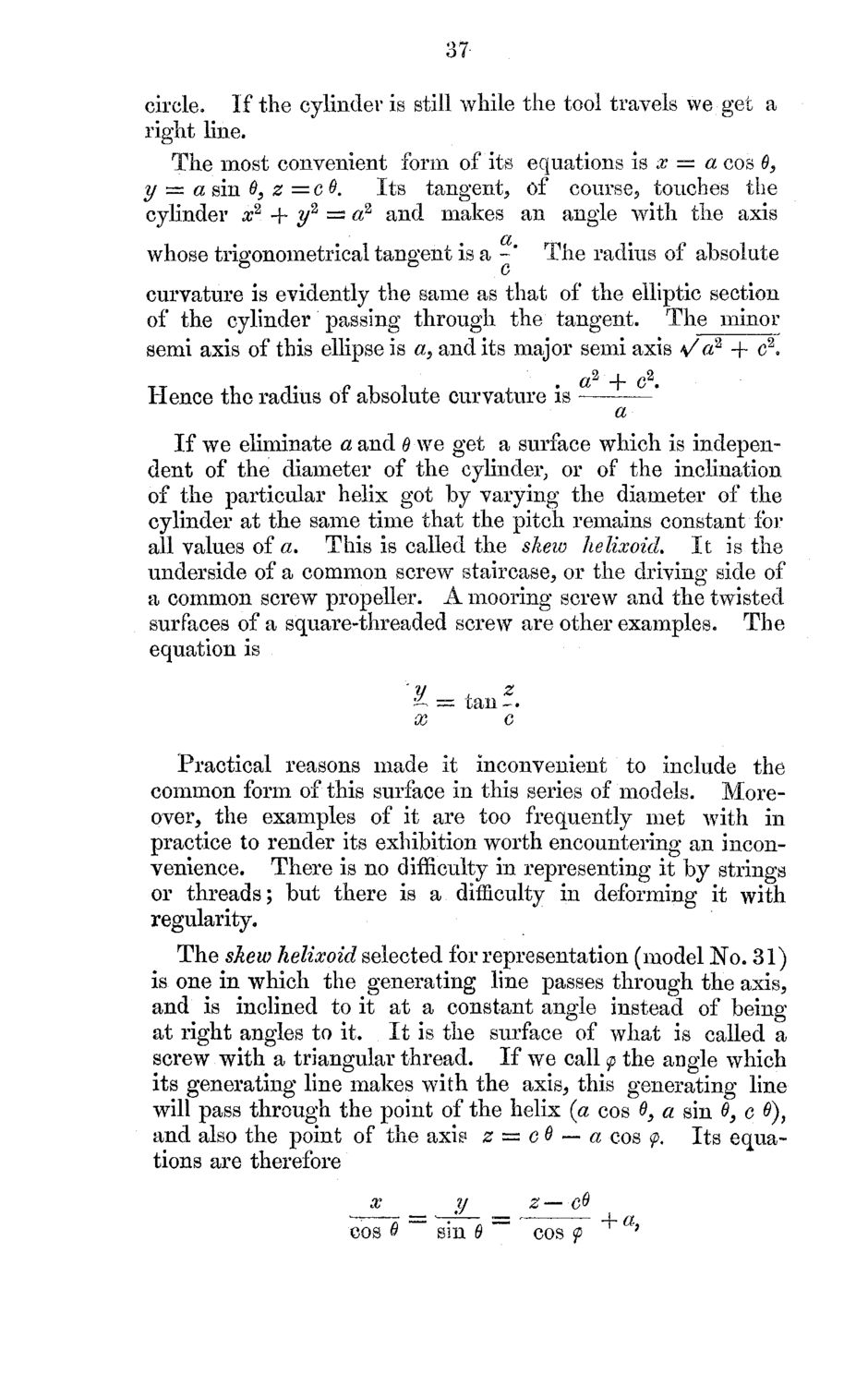| |
| |
Caption: Mathematical Models Catalog of a Collection of Models of Ruled Surfaces
This is a reduced-resolution page image for fast online browsing.

EXTRACTED TEXT FROM PAGE:
37 circle. If the cylinder is still while the tool travels w e get a right line. T h e most convenient form of its equations is x == a cos 0, y = a sin 69 z — c Q . Its tangent, of course, touches the cylinder x2 + y2 = a2 and makes an angle with the axis whose trigonometrical tangent is a -' The radius of absolute curvature is evidently the same as that of the elliptic section of the cylinder passing through the tangent. T h e minor semi axis of this ellipse is a, and its major semi axis s/ a2 -f c2. a2 + c2. Hence the radius of absolute curvature is " a If w e eliminate a and 0 w e get a surface which is independent of the diameter of the cylinder, or of the inclination of the particular helix got by varying the diameter of the cylinder at the same time that the pitch remains constant for all values of a. This is called the skeiv helixoid. It is the underside of a c o m m o n screw staircase, or the driving side of a c o m m o n screw propeller. A mooring screw and the twisted surfaces of a square-threaded screw are other examples. T h e equation is ~ = tan~. x c Practical reasons made it inconvenient to include the c o m m o n form of this surface in this series of models. Moreover, the examples of it are too frequently met with in practice to render its exhibition worth encountering an inconvenience. There is no difficulty in representing it b y strings or threads; but there is a difficulty in deforming it with regularity. T h e skew helixoid selected for representation (model N o . 31) is one in which the generating line passes through the axis, and is inclined to it at a constant angle instead of being at right angles to it. It is the surface of what is called a screw with a triangular thread. If w e call < the angle which p its generating line makes with the axis, this generating line will pass through the point of the helix (a cos 0, a sin 0, c Q)> and also the point of the axis z = c 0 — a cos < . Its equap tions are therefore x y z— c6 cos 6 ~~ sin 6 ~~ cos < p ' *
| |